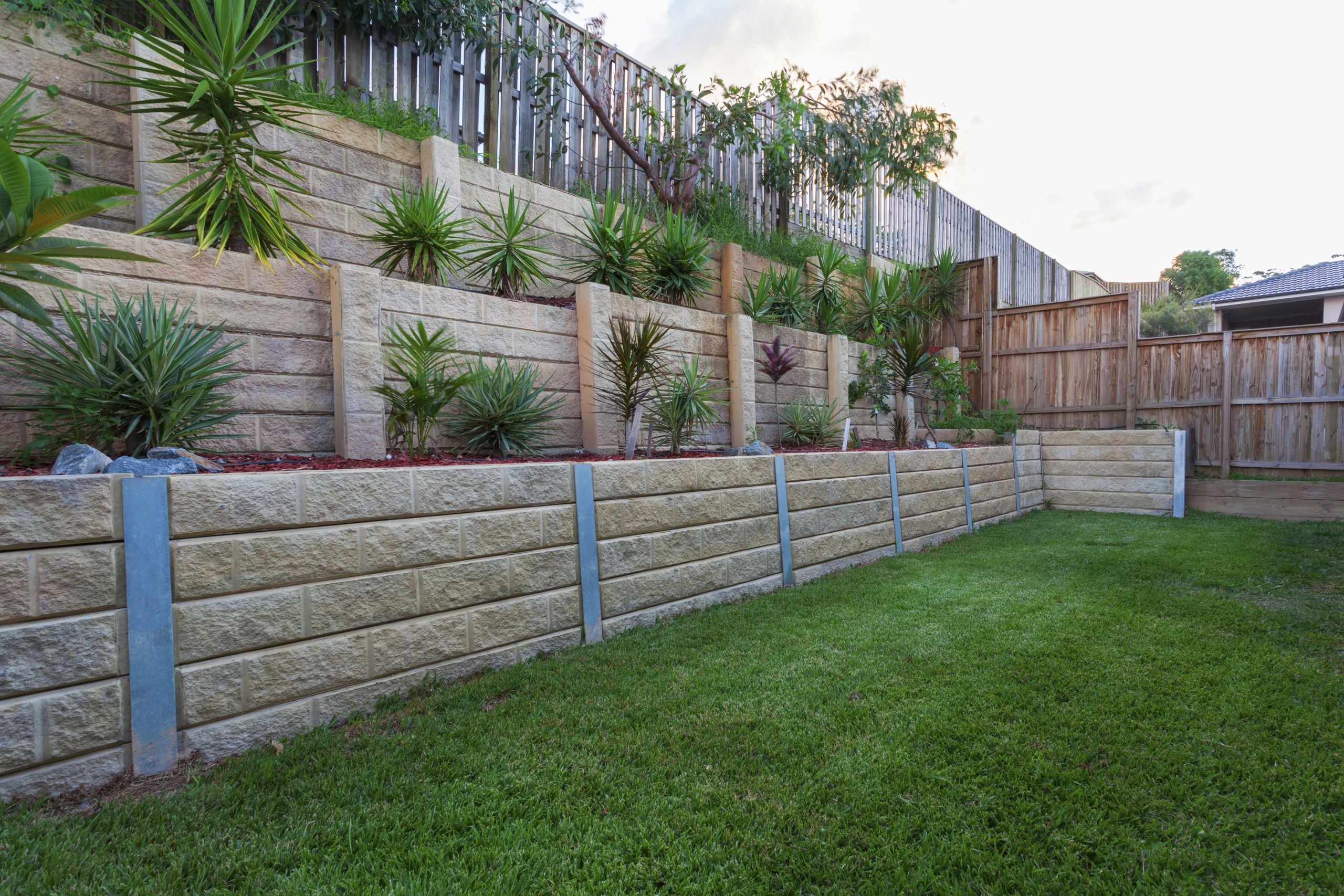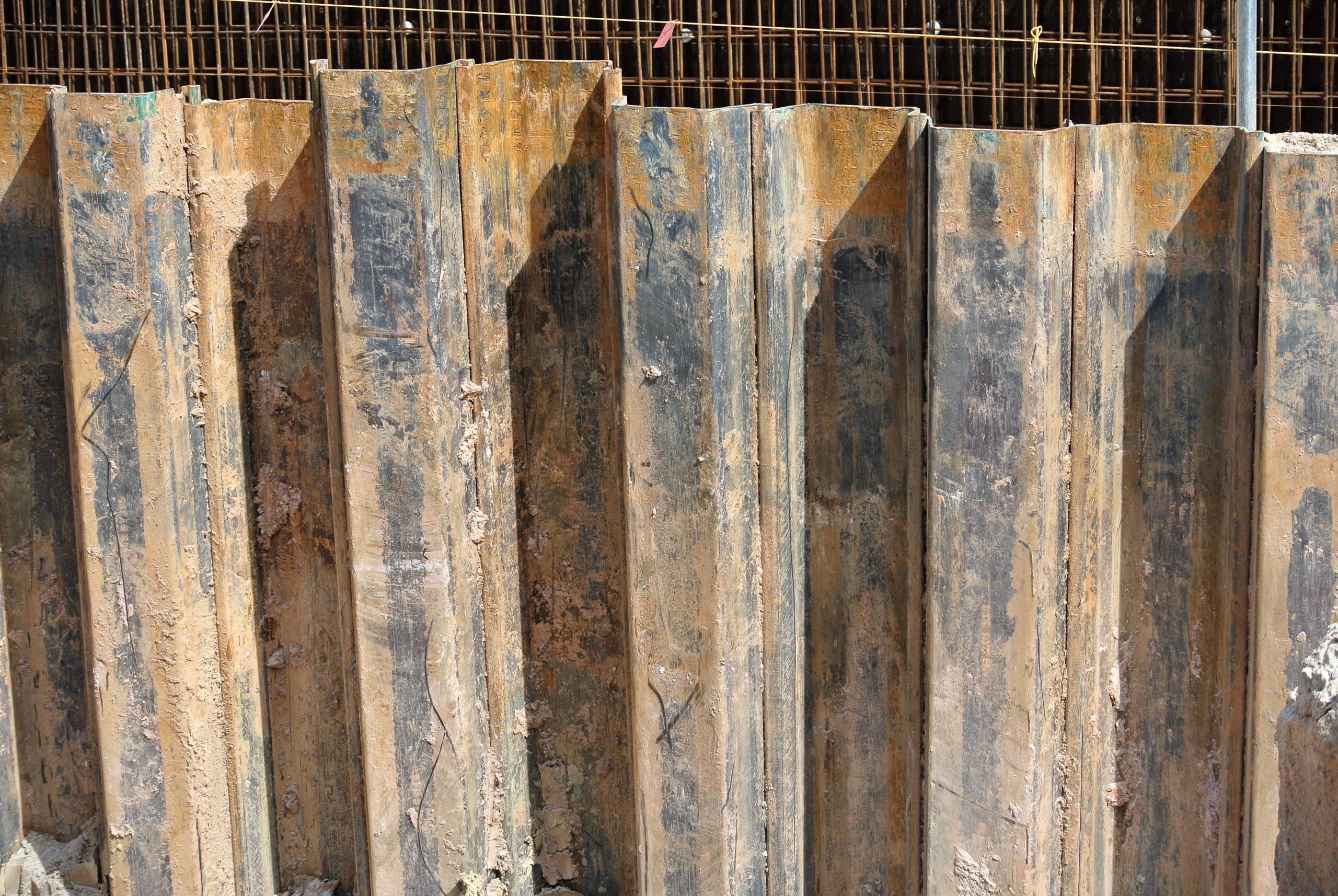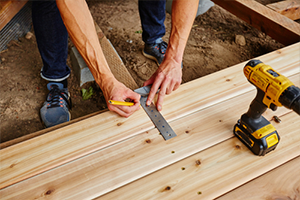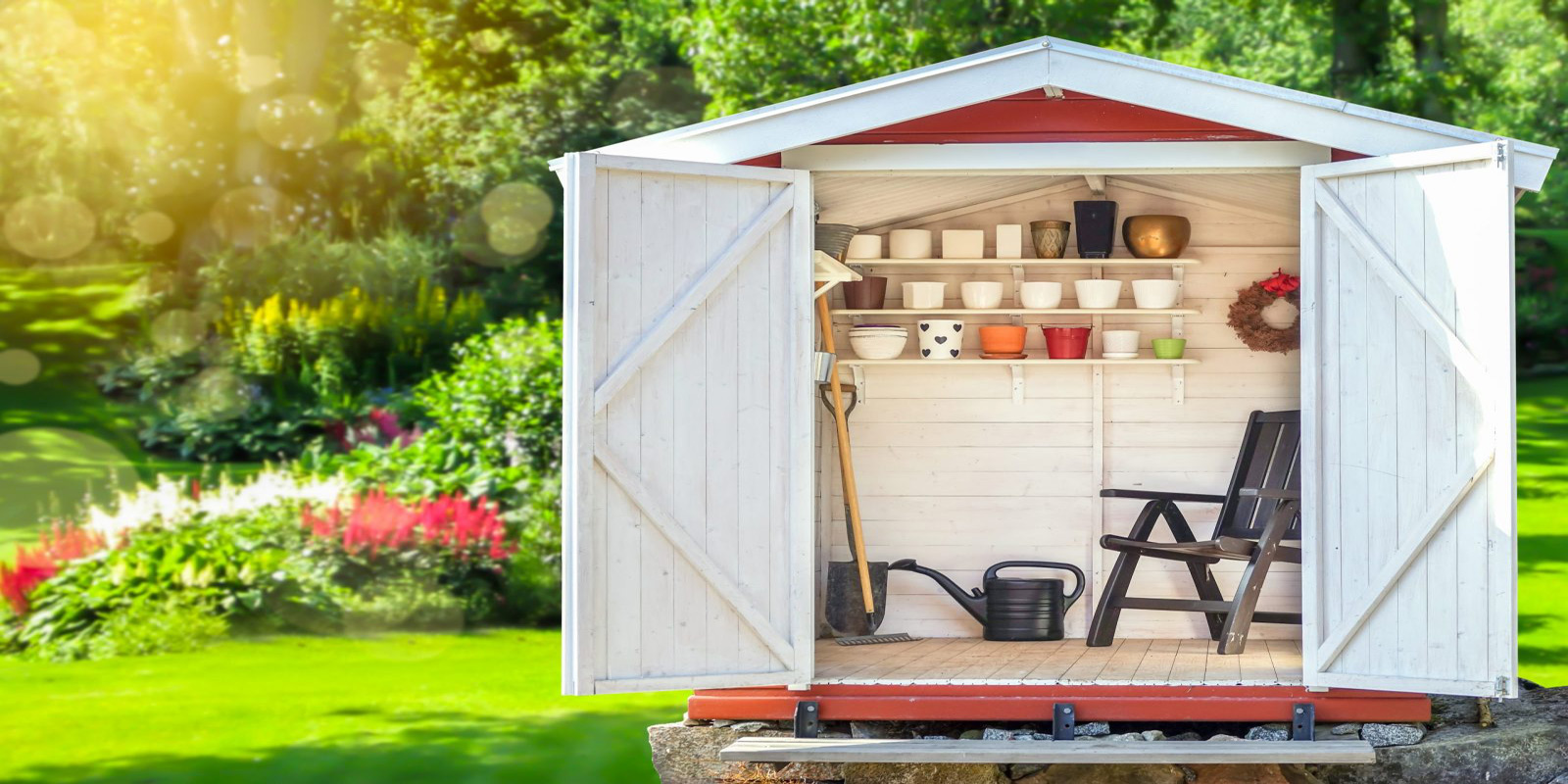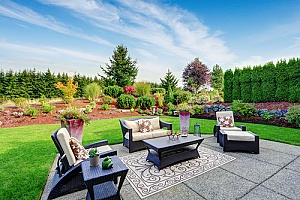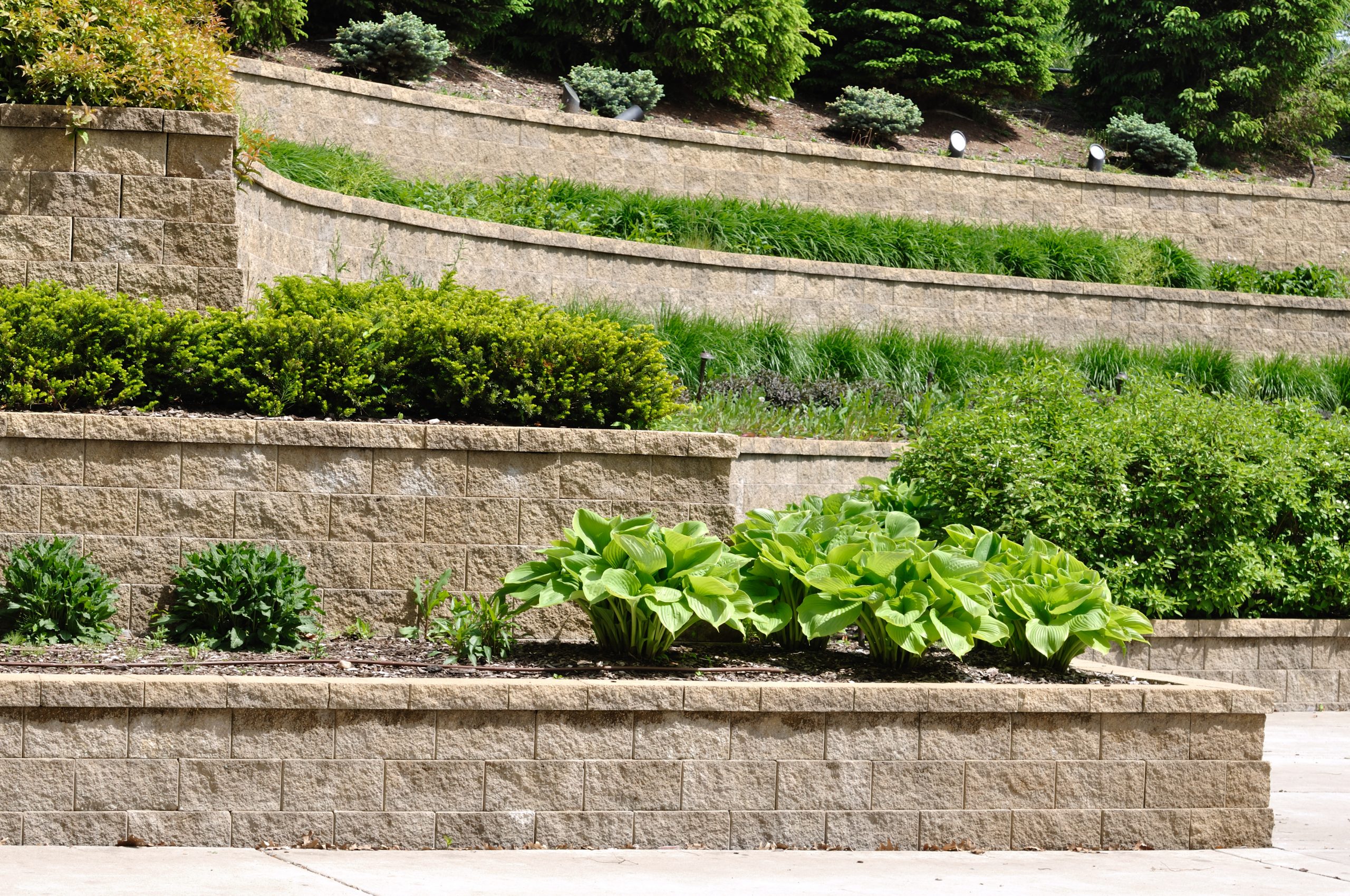
Building a retaining wall construction is no easy task. Below we talk about the general definition of a retaining wall, the types of retaining walls and materials used, general construction methods, types of backfill material, water drainage, railing protection and the basics steps to build a retaining wall.
What is a Retaining Wall?
A retaining wall is a rigid structure that holds or retains the soil behind it. There are many types of materials that can be used to create retaining walls like concrete blocks, poured concrete, treated timbers, rocks or boulders. The type of material used for your retaining wall is determined by your location, available materials, soil conditions, wall height and retaining wall design specifications.
Retaining Wall Design Considerations:
- Height of Water Table
- Nature & Type of Existing Soil
- Subsoil Water Movements
- Type of Retaining Wall Material
Gravity Retaining Wall
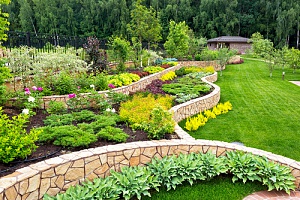
Gravity retaining walls are walls that depend on their own weight retain the soil. These types of walls are typically shorter in height. An interlocking block wall can provide soil retention. These types of blocks often come in a variety of colors and textures.
Geogrid Reinforced Retaining Wall
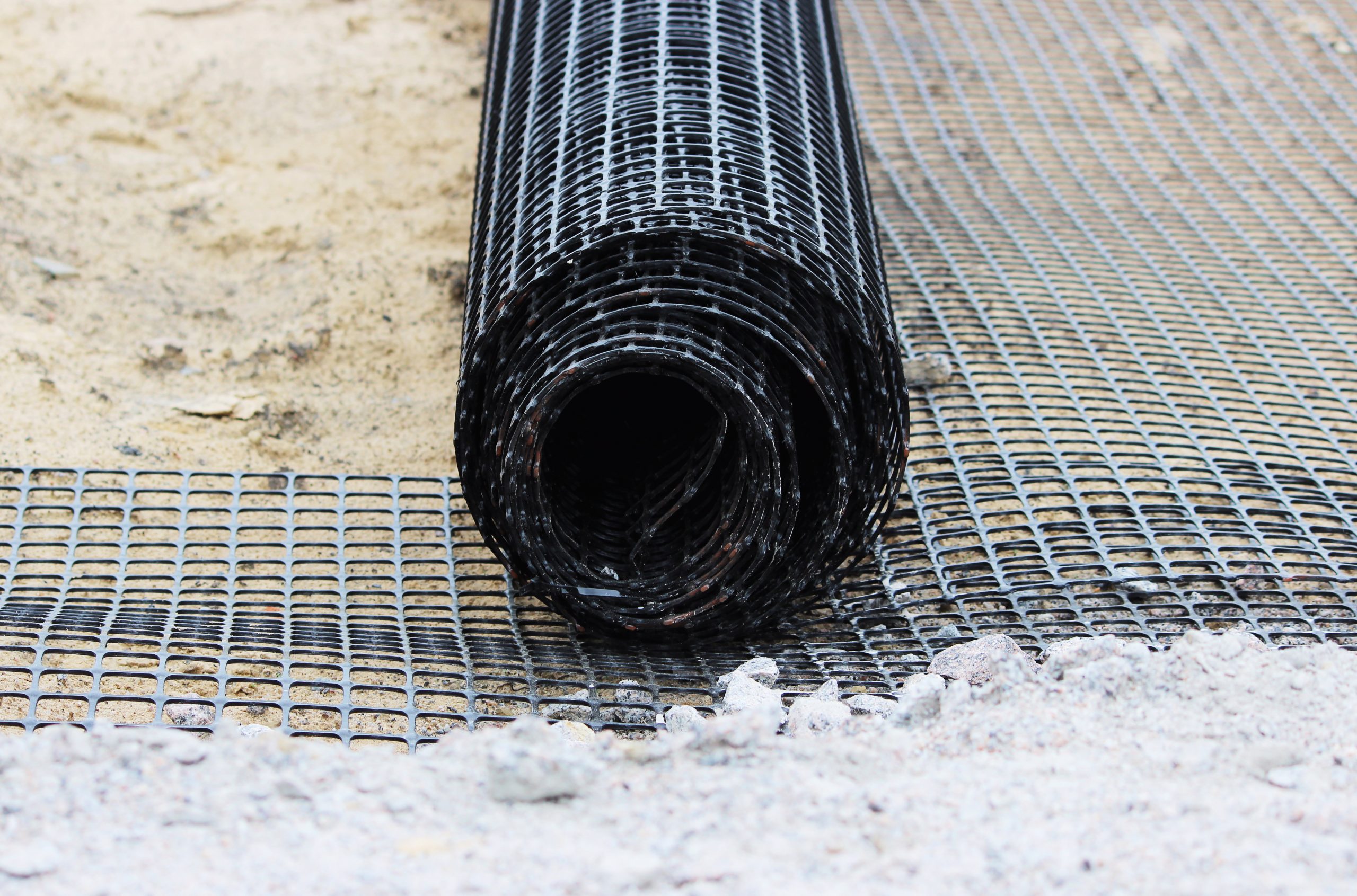
This type of retaining wall uses the interlocking block material and a geogrid. The geogrid attached to the retaining wall block and buried with the soil to secure the wall in place.
Cantilever Retaining Wall
Cantilever retaining wall composed of wall with a footing. The design loads will determine the length, width and thickness of the footing and stem wall.
Buttressed Retaining Wall
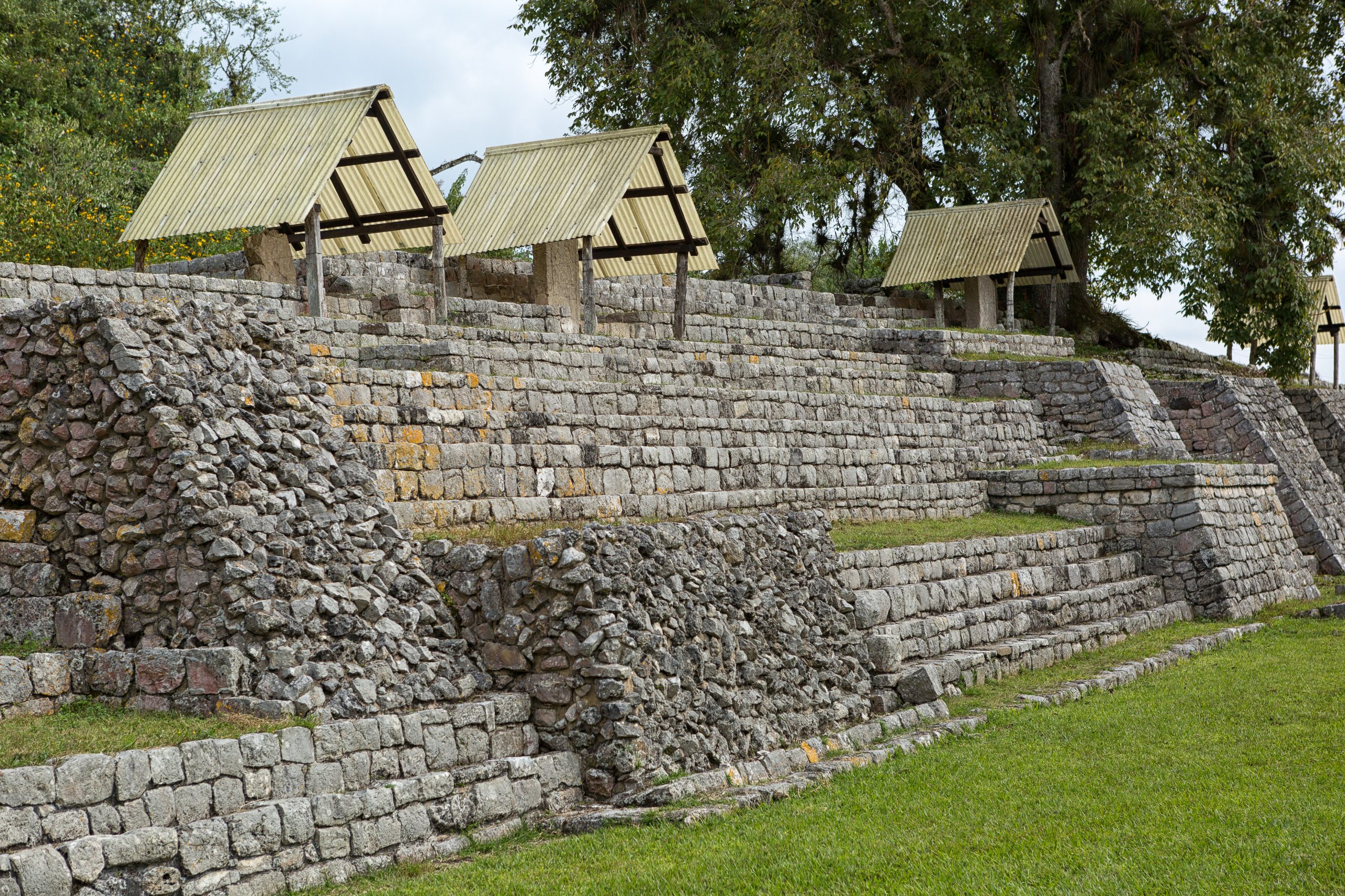
Is a cantilever retaining wall. This type of wall has a buttress to provide increase strength. This allows for improved soil retention.
Anchored Retaining Wall
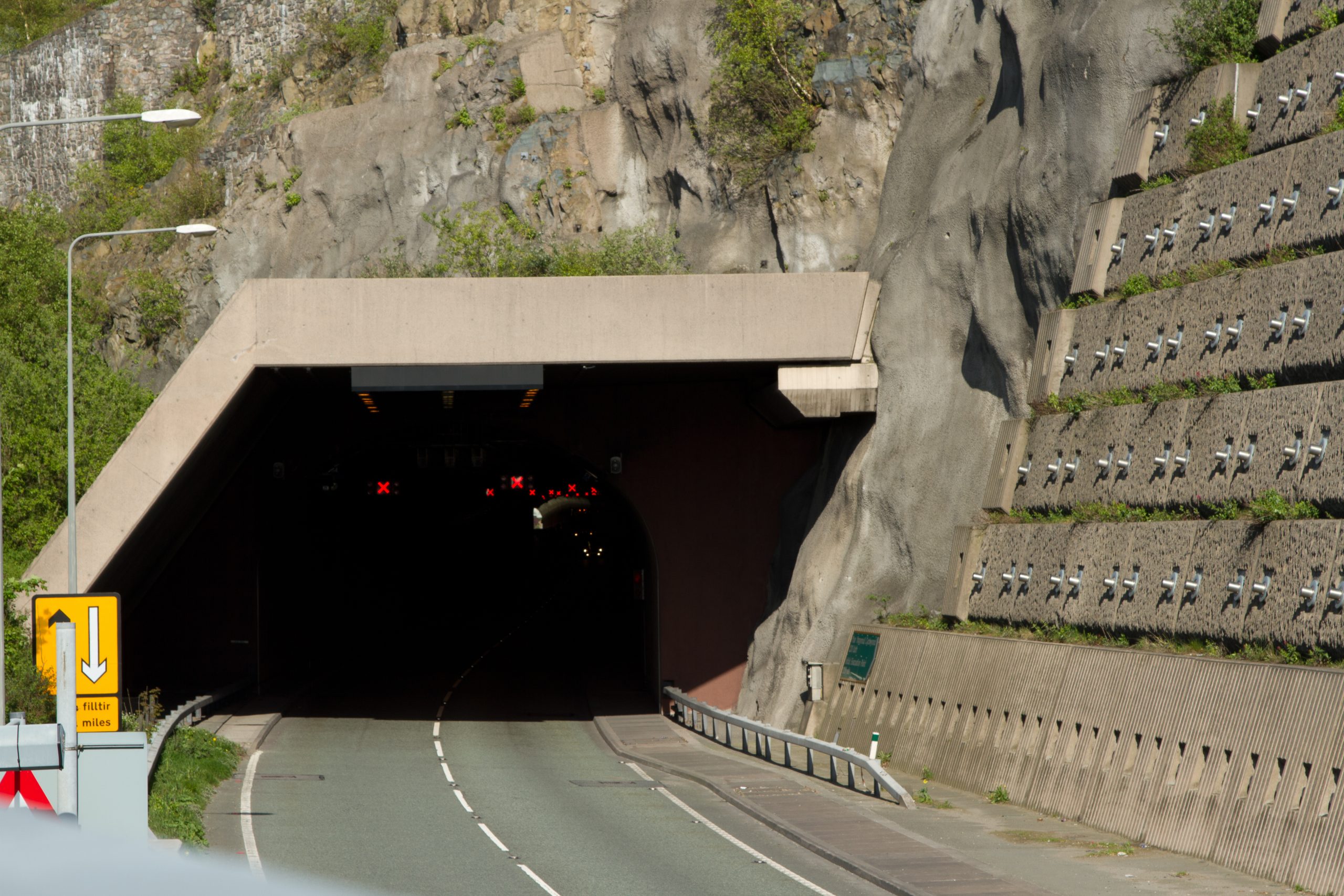
This type of wall uses cable rods or wires to secure the wall. The anchored retaining wall can resist overturning and the sliding pressure.
Piled Retaining Wall
Pile retaining wall are constructed by driving reinforced concrete piles or metal I beams into the ground. The depth of the piles is determined in the design stage. The depth is sufficient to counter the force which tries to push over the wall. A piled walls offers high stiffness retaining elements. The stiffness can hold lateral pressure in large excavation depths. This results in almost no disturbance to surrounding structures or properties.
Sheet Pile Walls
This type of wall uses walls made of steel. The steel walls are mechanically rammed into the ground. This type of wall cannot stand very high pressure.
Mechanically Stabilized Earth (MSE) Retaining Wall
The retaining wall is secured the select soil, geogrid, crushed rock with face stones. This allows for a complete retaining wall structure. The geogrid attached to the retaining wall material. The retaining wall is held in place by a geogrid and soil. This provides the strength for the retaining wall. The load of the retained material placed on the geogrid secures the wall with the placement of the soil behind the wall. The blocks that are used to face the retaining wall are a minor structural element.
Timber Retaining Wall 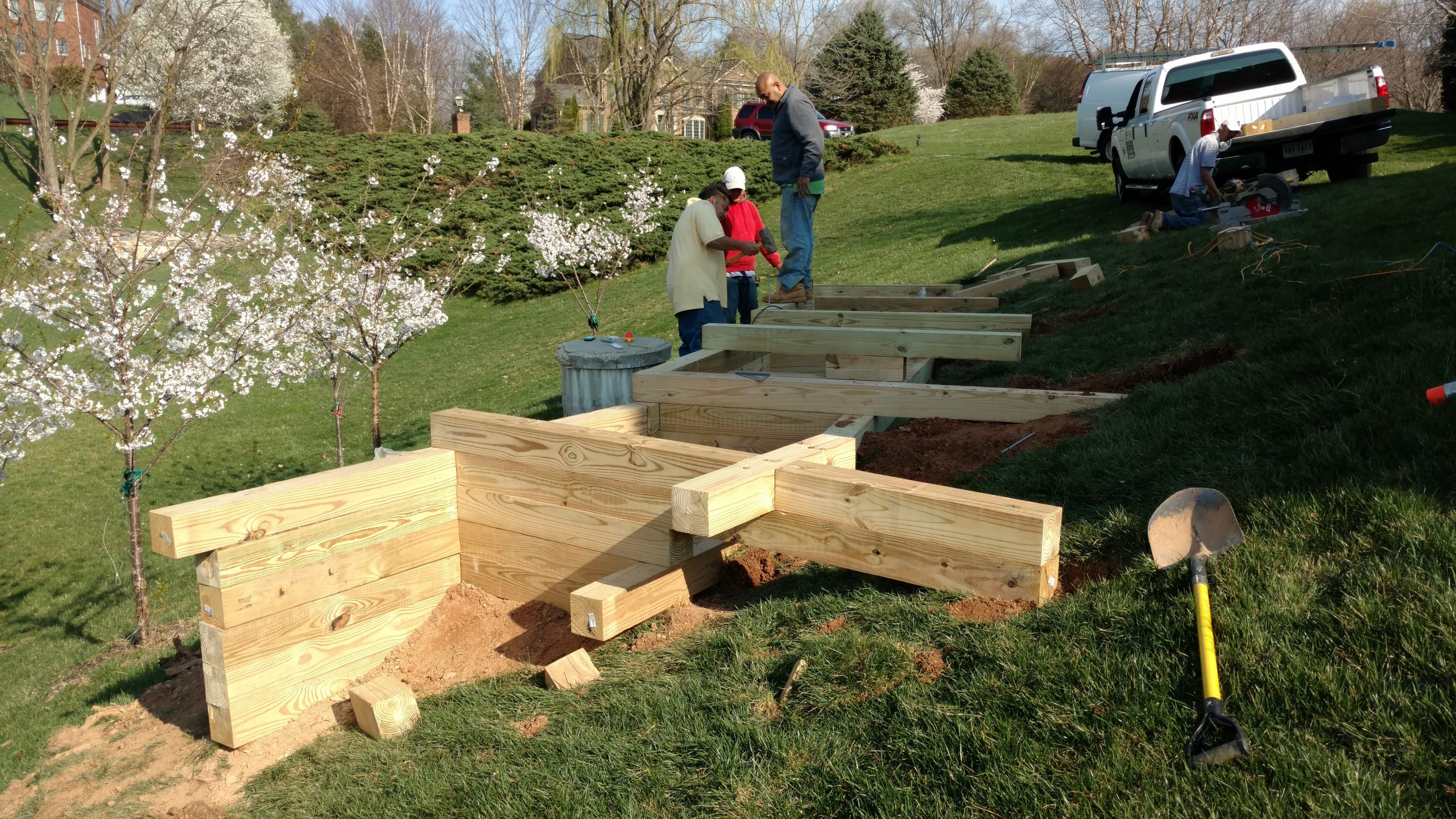
This wood type wall can be installed quickly and usually at reduced cost. This type of wall has serious limitations for soil retention and has a shorter lifespan.
What type of retaining wall is best?
This is best answered on the retaining wall expectations. Timber and inter-locking-concrete-block walls are great retaining wall options. Cinder block and masonry along with poured concrete ones usually provide the best and long lasting option.
Do I need drainage behind retaining wall?
I always provide for retaining wall drainage. The retaining wall design must allow for the water behind the wall to escape. Increased water content in the soil can lead to bulging and or cracking of the retaining wall. In extreme conditions, catastrophic failures have occurred. To prevent this failure, retaining walls should have weep holes, stone backfill with perforated pipe with filter fabric to direct water away and from the backside of the retaining wall.
Do I need a permit to build a retaining wall?
It is important to check with your local building permit office for compliance. Most walls over 30″ in height need a permit.
Do retaining walls add value?
Retaining walls can add value to your property. The style and result are important. If you can reclaim some lawn area for recreation, this can appeal to a future property owner.
How do you prepare the ground for a retaining wall block?
Your local building department can provide you with construction details. The size and height of the wall will determine how to build the retaining wall base.
Do you fill hollow retaining wall blocks?
Depending on the type of blocks and height will determine what material to use. In my experience, we have used soil, stone and fiber meshed concrete for the interior of block walls. The filled retaining wall blocks increased strength. This wall provided increase soil retention.
Do you need landscape fabric behind retaining wall?
I always use filter fabric with my retaining walls. The filter fabric prevents the migration of sediment into the interior of the pipe and extends the lifespan of the wall.
At what height does a retaining wall need to be engineered?
Check with your building permit department. You want to comply with all building code ordinances. Most municipalities will require a building permit.
Is a retaining wall considered a permanent structure?
Retaining walls are usually considered a permanent structure.
How deep should the footing be for a retaining wall?
Different regions of the country will determine how deep the footing should be. In colder climates the footing must be deeper. The frost line is the determining factor. At this is the depth, the ground is less susceptible to movement by freezing and thawing.
Do you need a footing for a retaining wall?
In my experience, all engineered walls need a footing. Again, the amount of soil you want to retain will be the deciding factor on your building requirements.
How many cinder blocks do I need for a retaining wall?
Multiply the length and adjusted height measurement to determine the square footage. You can now multiply the square footage by .89 (the square foot of each standard cinder block). 10 foot long X 4 foot high = 40 square feet. 40 square feet times .89 = 35.6 cinder block.
Do all retaining walls need weep holes?
My answer is yes. Be sure the water behind the wall has a way to move around and away from the wall.
Why do retaining walls fail? 
The main cause of retaining wall failure is poor drainage. Without proper drainage, saturated soil adds to hydrostatic builds up behind the retaining wall. Increased weight of the soil, may be to much for your retaining wall.
How long do retaining walls last?
Concrete retaining walls can last 50 to 100 years. Brick walls can last at least 100 years. Current building codes provide for longer lasting retaining walls.
What is a retaining wall footer?
A retaining wall footing serves as the foundation of the retaining wall. The footing provides for a secure base for the placement of a cinder block and or concrete retaining wall. Again, a designed wall will provide all details for the proper building of the retaining wall.
Do you need gravel behind retaining wall?
I always install #57 stone with my retaining walls. This stone placed over the perforated pipe with filter fabric allows for water transfer around and away from the retaining wall. This extends the life and performance of the wall.
Why do retaining walls lean?
Pressure from the soil behind retaining walls have pushed the wall. The older retaining walls the more likely to lean. Over time the retaining wall materials lose their strength.
Can you fix a leaning retaining wall?
Sometimes you can fix a retaining wall. Sometimes you might be better off building a new wall.
Can cinder blocks be used for a retaining wall?
You can use cinder block to build a retaining wall. Make sure to build the wall according to the plan specifications and construction inspections.
What is the best backfill material?
The best backfill material is 3/4″ diameter stone (#57 stone), RC-2, clean fill dirt. The combination can provide great backfill material.
Should I replace a retaining wall?
You should replace leaning, bulging and sagging retaining walls. Contact a professional for a FREE Estimate. Always get three estimates and contact Ms. Utility.
Do I need a safety railing?
It has been my experience, a safety railing is always part of the retaining wall design. Without the safety railing, a person can fall from the elevated ground above. The fall can cause serious injury. This is why a safety railing is important.
How to Build a Retaining Wall
First check with your local building permit office. Determine if you need a permit. If you do, be sure to comply and always Contact Ms. Utility. Install and provide for a level footing or building base. Install footing (crushed base material, stone, concrete) for you retaining wall base. Stack your blocks using mortar, glue and or mechanical fasteners. Fill the block with dirt, stone or concrete. Install weep holes and drain pipe with filter fabric and 3/4″ stone. The stone allows for the drainage. At the top of your retaining wall install a safety railing. With the wall complete install grass seed and straw or sod over the immediate project areas.
Summary


Now you know, the general definition of a retaining wall, the types of retaining walls and materials used, general construction methods, types of backfill material, water drainage, railing protection and the basics steps to build a retaining wall.

My Premium Special Offers
For The New Standard of Excellence for DIY Chicken Coops!
Announcing: The World’s Largest Collection Of 16,000 Wood Plans
” How to Liven Up Your Home With Over
7250 Breathtaking Landscaping Designs WITHOUT Hiring Costly Professional Landscape Designers…
The Claim Buster eBook is written to help those who have been injured in a car accident, and those who weren’t injured but have a property damage claim with an insurance company.
Dirt Connections Receives Commissions For Successful Sales Transactions
Dirt Connections, Right Here, Right Now.
